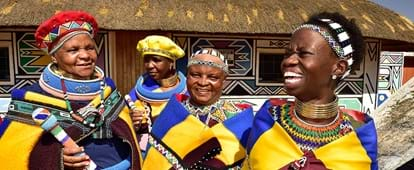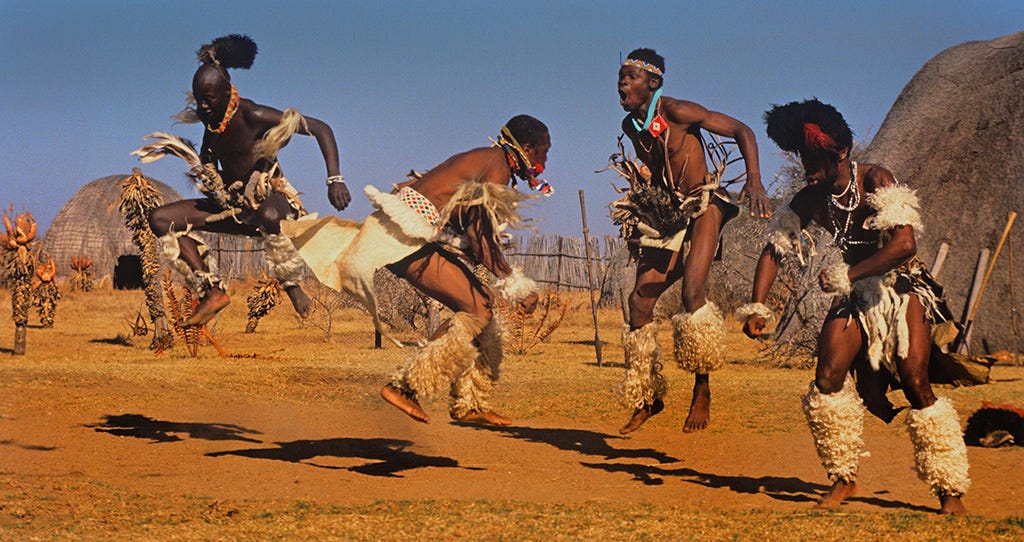Not known Details About South African Culture Today
Table of ContentsHow South African Culture Today can Save You Time, Stress, and Money.The Ultimate Guide To South African Culture TodayGetting The South African Culture Today To WorkThe Best Strategy To Use For South African Culture TodaySouth African Culture Today Things To Know Before You BuyWhat Does South African Culture Today Mean?
An issue of value in Zambian villages is the passing away of loved ones. All participants of the village placed money, time and initiative with each other for the funeral of the deceased.Throughout the mourning period; guys stay outside the house and the women stay inside the home of the deceased. After discussing the deceased, the village walks to the location of interment to claim their last goodbyes. Music and dance is a very essential element of the Zambian culture. The different tribal systems have their own dancing types; nonetheless, makishi prevails among all people.
The Definitive Guide to South African Culture Today
When it comes to music, drums are made use of the most, with a range of drumming ceremonies. In Zambia, bulk of individuals are Christian; Protestant and Roman Catholic. There are little teams of Muslims and Hindus, with the remainder following regional indigenous tribal beliefs.

South African heritage and culture is profoundly varied, and contains various groups of people who each have their very own customs and ideas. Having such a variety of individuals and societies is what makes South Africa so one-of-a-kind. In the true sense of the phrase, we are a rainbow nation.
South Africa has around 3 hundred thousand Portuguese individuals living in it. Making it the 7th on the list of countries with one of the most Portuguese people in it beyond Portugal. Portuguese is not just a culture, but it is also a language and a nationality. Portuguese people originate from the country of Portugal in Europe, nevertheless, because of Portugal (like numerous other countries in Europe) exploring the globe and overcoming various other nations throughout the 15th 20th centuries, South Africa has what we call Portuguese South African's living in it.
The Only Guide for South African Culture Today
Among the prominent attributes of the topography is a plateau that covers practically 2 thirds of the center of the nation. The plateau complex climbs towards the southeast, where it climaxes in the Drakensberg range, component of an escarpment that divides the plateau from the seaside locations. The Drakensburg consists of Sparkling wine Castle, the highest peak in the country.
The region north of the Witwatersrand, called the bushveld, slopes downward from eastern to west towards the Limpopo River, which develops the international boundary. The western section of the plateau, the middleveld, also comes down in the direction of the west and differs in elevation in between the highveld and bushveld. Between the Drakensburg and the eastern and southerly shoreline, the land comes down to the sea.
Nearer the coast there is a low-lying level called the eastern lowveld. Southwest of the plateau the nation ends up being considerably much more dry, providing means to the hostile desert of the Great Karroo, bordered on the east by the reduced, much better watered plateau of the Little Karroo. Dividing the completely dry southerly interior from the sandy littoral of the southerly coast and West Cape is one more array, the Langeberg.
The smart Trick of South African Culture Today That Nobody is Talking About
The country's racially, ethnically, and politically separated background has actually created national and subnational signs that still work as signs of the country, and others signs that are accepted only by particular teams. The monoliths to white inhabitant occupation and political dominance, such as the Afrikaner Voortrekker ("pioneer") Monument in Pretoria and the Rhodes Monument honoring the British colonial empire builder and Cape prime minister Cecil Rhodes, stay sectarian icons.
The first contemporary inhabitants were the San reference ("bushman") hunter-gatherers and the Khoi ("Hottentot") individuals, that herded animals (South African culture today). The San might have existed for hundreds of years and left proof of their visibility in thousands of ancient cave paintings ("rock art"). Bantu-speaking clans that were the forefathers of the Nguni (today's amaZulu, amaXhosa, amaSwazi, and vaTsonga individuals) and Tswana-Sotho language groups (today's Batswana and Southern and Northern Basotho) migrated below eastern Africa as early as the fifteenth century

The two previous republics of the Orange Free State and Transvaal (South African Republic) were established by Afrikaner settlers that defeated and dispossessed the Basotho and Batswana. Lesotho would certainly have been forcibly included into the Orange Free State without the expansion of British security in 1869. The ultimate marriage of the nation arised from the South African War (18991902) in between the British and the 2 Afrikaner republics, which lowered the nation to spoil at the beginning of the twentieth century.
Afrikaners historically considered themselves the just real South Africans and, while giving complete citizenship to all residents of European descent, rejected that standing to people of color up until the autonomous transition of 1994. British South Africans keep a feeling of social and social link to Great Britain without weakening their identity as South Africans.
What Does South African Culture Today Mean?
The variety and fragmentation within ethnic groups and the click for info equilibrium of stress in between those teams during the twentieth century protected against interethnic civil problem. While intergroup stress over sources, privileges, and political supremacy stay, those disputes are as likely to pit Zulu versus Zulu as Zulu against Xhosa or African against Afrikaner.
From colonial India, British merchants and managers brought the curved steel ornamental roofing systems and slender shoelace job pillars that still exemplify the outdoor patios of homes in communities and cities throughout the country. Homes of praise contribute a crucial architectural aspect also in the smallest communities. Along with the skyrocketing steeples and traditional stonework of Afrikaans Dutch Reformed churches, Anglican churches, synagogues, mosques, and Hindu shrines provide selection to the spiritual building scene.

Slaughtering and the developing of standard grain beer are vital in securing the involvement and goodwill of the ancestors that are considered the guardians of good luck, success, and health. Indian communities preserve their native cooking customs and use them on Islamic and Hindu ritual and ceremonial celebrations. Afrikaners and Coloured individuals gather at weekends and special events at multifamily bbqs called braais, where area bonds are strengthened.
Since this was the key financial enterprise of both black Africans and white colonists, dispute in between those groups fixated the property of grazing land and livestock. In 1867, the biggest ruby down payments on the planet were uncovered at Kimberley in the west main location. The wide range from those areas aided fund the exploitation of the greatest gold reef in the world, which was discovered on the Witwatersrand in 1886.
Fascination About South African Culture Today
This led to misconceptions and intentional misstatement in the negotiations of white inhabitants and federal government authorities with African chiefs during the early american duration (South African culture today). In the establishment of African reserves, some facets of common and chiefly "tribal count on" land tenure were preserved, and also in white backwoods, types of common tenure were still exercised in locations with African areas
After the democratic improvement of 1994, programs for land restitution, redistribution, and reform were instituted, however development has actually been slow. The white minority this website still manages eighty percent of the land. In the wake of farming land invasions in Zimbabwe, the Division of Land Affairs has actually promised to speed land redistribution.